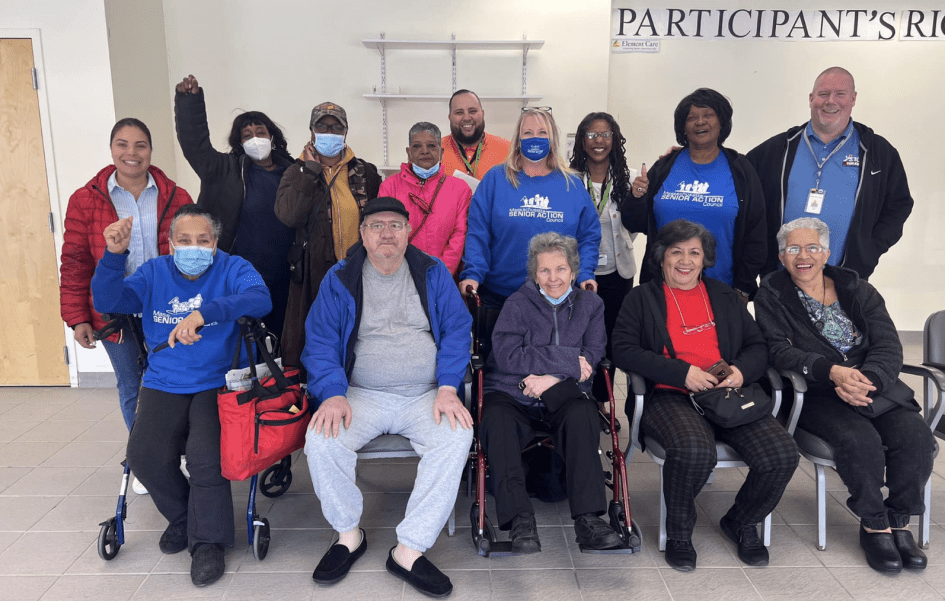The trope about senior centers being the place you go for bingo and a hot lunch has been outdated for years, but especially so ever since the COVID-19 pandemic hit. Challenged to keep their communities of older people connected, informed, and engaged while keeping them safe from the virus, staff across the country accelerated the transformation of their centers into hubs of information and activities, delivered online and in person.
For Caitlin Coyle, all of this transformation means a packed schedule of consultations with senior centers across Massachusetts. Coyle, PhD, is a research fellow with the Gerontology Institute’s Center for Social and Demographic Research on Aging (CSDRA) at UMass Boston. Coyle and her team partner with community based organizations on the planning, development, and improvement of services and support for older adults and people with disabilities. In previous years, they might work with three communities each semester, or six in a year. Currently Coyle has 11 communities listed on her project whiteboard.
“We’re seeing a big uptick, partly as a result of COVID,” she says. Cities and towns are channeling some of their American Rescue Plan Act money into programs for older residents. The federal COVID stimulus funding passed by Congress in 2021 must be spent to help populations who were disproportionately affected by the pandemic, as older adults were.
“We’re also working with bigger and more diverse cities than in the past,” Coyle says, including Lynn, Brockton, Barnstable, and others. The larger communities have more diverse populations. For the City of Lynn, for example, Coyle and her team offered a Spanish version of their survey of community interests and needs, and they conducted focus groups with Spanish-speaking facilitators.
Communities commission work with the CSDRA through mayors, town selectmen, and other public officials. Typically the cities and towns are seeking recommendations on improving access to services for older adults. “Communities contact us because they’re looking for credible data and the recommendations of experts in aging,” Coyle says. “Often the impetus is that they want to be more relevant to the community. The 60-plus population is very different today from 20 years ago. So a lot of the work is understanding who the population is and what they want and need.”
Coyle facilitates information gathering through surveys and focus groups, then analyzes the information to provide a report of findings, both quantitative and qualitative.
Whether the changes many senior centers made during Covid—moving most programs and services online—will continue or morph into hybrid offerings is still to be seen. During a center visit one recent morning, Coyle saw a Zumba class being taught with a half dozen people in the room and a dozen or so participating online, their computer screens displayed Zoom gallery style up on a large screen.
“In some communities, online programming doesn’t work very well, and others are doing remote programs really well. It seems like it’s a matter of each community,” Coyle says. “As we say in our work, ‘If you’ve been to one senior center, you’ve been to one senior center.’”
Case study: Helping Swampscott, MA, become age friendlier
One benefit of the increased requests for assistance is that CSDRA has hired the most undergraduate and graduate assistants it has ever employed, giving more UMass Boston students experience with research projects.
Other benefits include building consensus about the importance of healthy aging. “There are a lot of community stakeholders and elected officials who care about the needs of the people in their community,” Coyle says. She also appreciates the exchanges and awareness building that she witnesses in focus groups. “It’s not every day that communities get an opportunity to come to a table to discuss what it means to age in their city or town. We’re creating a space for people to talk about issues that they all deal with.”


1 Pingback